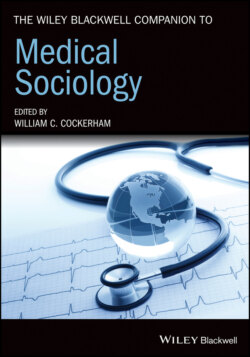Читать книгу The Wiley Blackwell Companion to Medical Sociology - Группа авторов - Страница 54
CONCLUSION
ОглавлениеLike many other academic disciplines, consensus among medical sociologists is built from an accumulation of evidence from accepted research methods. On the one hand, the breadth of sociological methods available to study a topic is at times overwhelming. On the other hand, the triangulation of findings from multiple methods is a critical part of establishing consensus on sociological phenomenon as it relates to health and health systems. Throughout the chapters that follow in this volume, the integration of results from a variety of research methods will often offer answers to contemporary questions in medical sociology that no single study is able to provide. Thus, in our chapter of methods, we’ve tried to unpack some of the basic information about doing medical sociology research that can easily be skipped if one is too focused on pure statistical estimation.
We believe that doing good research is important beyond simply the improvement of science. Medical sociology has always had a more applied focus than other sub-disciplines of sociology, making it imperative that we use strong methodological approaches to answer a range of questions that also serve the public good. Some of these questions will take on the testing, refining, and creation of general social theory. Other questions will be more focused on using sociological insights to solve pressing problems in health and medicine. Both intentions are improved by attention to the issues we discuss here.
To end on a practical note, we’d like to take a moment to emphasize that a major component of both qualitative and quantitative analysis should be careful data management. The bulk of day-to-day work on research projects is keeping data organized and preparing it for analysis. Unfortunately, even the most cutting-edge methods can’t overcome the errors created by incorrectly coded variables or misplaced field notes. This adds organizational pitfalls to the already difficult process of empirically testing a theoretical model. Although we won’t advocate strongly for any specific one, we strongly suggest investing the time and energy to establish a good workflow of data analysis with your preferred method of analysis [e.g. see Long (2009) for an excellent approach integrated with Stata and Wickham and Grolemund (2017) for one using R].
